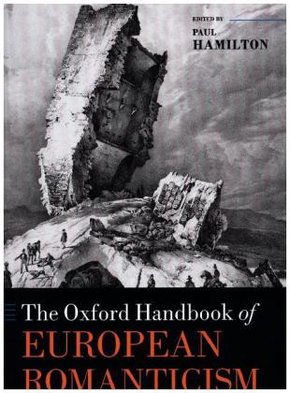The Oxford Handbook of European Romanticism
| Verlag | Oxford University Press |
| Auflage | 2016 |
| Seiten | 858 |
| Format | 17,9 x 25,3 x 5,1 cm |
| Gewicht | 1586 g |
| Artikeltyp | Englisches Buch |
| Reihe | Oxford Handbooks |
| ISBN-10 | 0199696381 |
| EAN | 9780199696383 |
| Bestell-Nr | 19969638EA |
The Oxford Handbook of European Romanticism provides a comprehensive guide to beginning or continuing study of European Romanticism.
Klappentext:
The Oxford Handbook of European Romanticism focuses on the period beginning with the French Revolution and extending to the uprisings of 1848 across Europe. It brings together leading scholars in the field to examine the intellectual, literary, philosophical, and political elements of European Romanticism. The volume begins with a series of chapters examining key texts written by major writers in languages including French, German, Italian, Spanish, Russian,
Hungarian, Greek, and Polish amongst others. Then follows a second section based on the naturally inter-disciplinary quality of Romanticism, encapsulated by the different discourses with which writers of the time, set up an internal comparative dynamic. These chapters highlight the sense a discourse gives of
being written knowledgeably against other pretenders to completeness or comprehensiveness of understanding, and the Enlightenment encyclopaedic project. Discourses typically push their individual claims to resume Europeanculture, collaborating and trying to assimilate each other in the process. The main examples featuring here are history, geography, drama, theology, language, geography, philosophy, political theory, the sciences, and the media. Each chapter offers original and individual
interpretation of individual aspects of an inherently comparative world of individual writers and the discursive idioms to which they are historically subject. Together the forty-one chapters provide a comprehensive and unique overview of European Romanticism.
Rezension:
The Oxford Handbook of European Romanticism is a splendid volume that fills a need. ... This rigorous survey of the broad European movement of Romanticism is thus a welcome reference counterpoint to what currently exists for students and researchers. Hamilton made the deft editorial decision to divide the handbook into two sections: "Language" and "Discourses". Considering the topic by language does justice to the critical and creative communities that saw themselves as such while avoiding the anachronistic awkwardness of referring to nations or states that did not or no longer exist. This division also allows the volume to strike a nice balance between topics one would expect and topics that are refreshingly innovative ("Discourses"). ... Summing Up: Recommended. Upper-division undergraduates through faculty; general readers. S. Barnett, CHOICE

